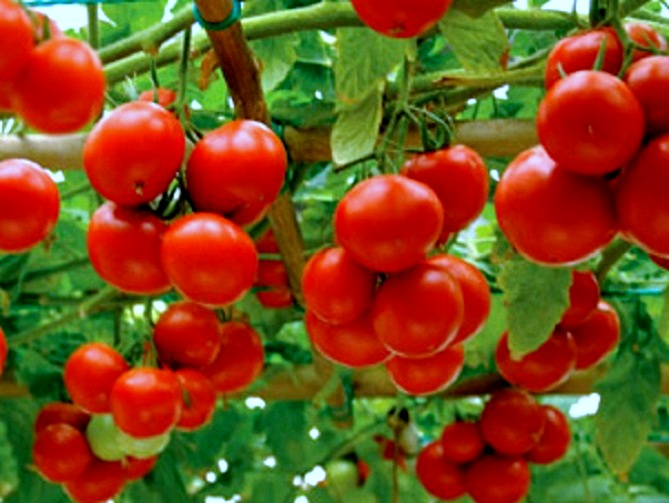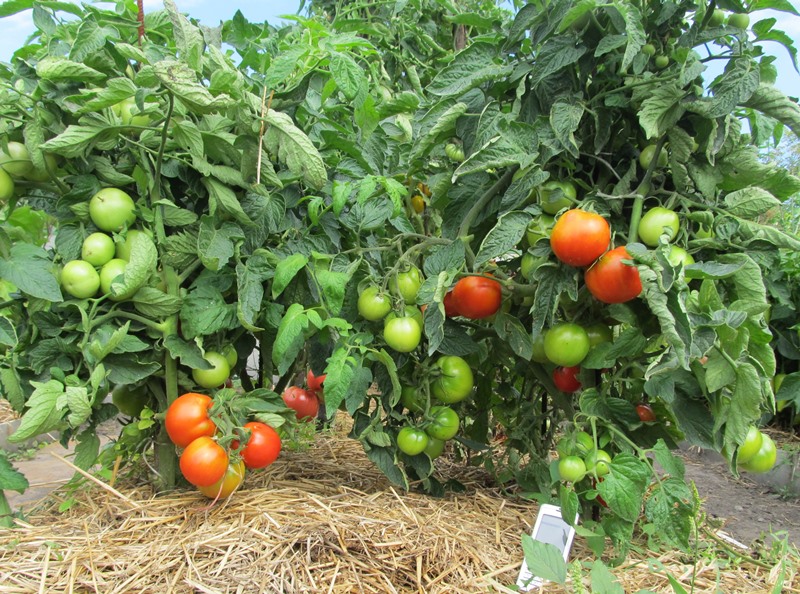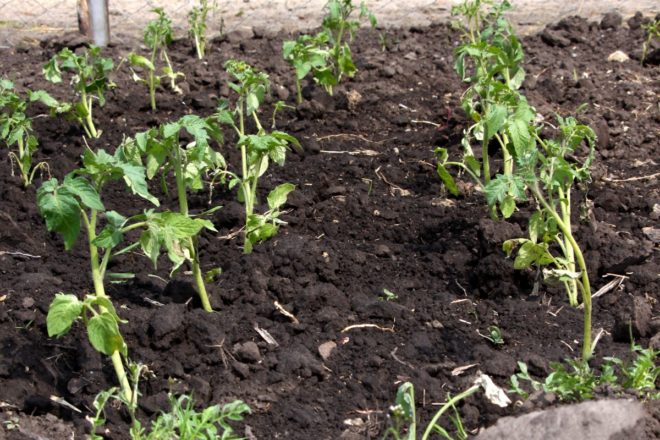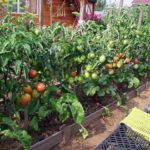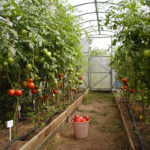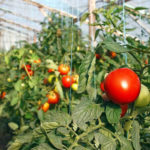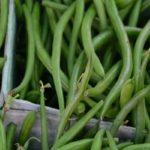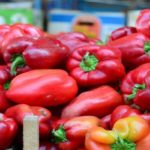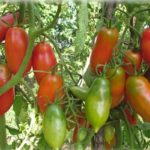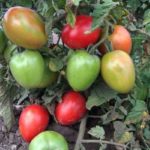Many gardeners propagate the Russian Yablonka tomato with their own seeds. This is very convenient, because the quality of the seeds is guaranteed. Although the variety is early ripening, it bears fruit until autumn. Even a super-lazy or super-busy summer resident can provide the minimal care that is needed.
Description of the variety
Early ripening Yablonka Russia tomatoes are grown with equal success by both summer residents who have greenhouses and those who do not. In this sense, the variety is universal. Notice differences in the growth of the bush.
In protected soil, the determinant tomato Yablonka Rossii can reach a decent height of 1.5-1.7 m. In the greenhouse, the height of the bush is only 1-1.2 m, which is much closer to the growth characteristics of children (determinant varieties).
The bushes of Yablonka tomatoes are strong, the leaves look like potato tops. Flowers are collected in brushes. Fruit formation occurs evenly throughout the summer. One brush can have up to 8 ovaries.
This tomato variety requires minimal care. He absolutely does not need the following agricultural techniques:
- bush formation;
- removal of stepsons.
But the support is worth using. Drive the stake into the hole before transplanting the seedlings. When the tomatoes begin to sing together, it will come in handy. The branches, although powerful, are best tied to a support. The fruits, which quickly fill with juice, can overwhelm the bush to the ground in one night.
Fruit characteristics
Tomatoes Yablonka Rossii form dense, medium-sized fruits. The weight of the largest specimens rarely exceeds 100 g. Usually, from 5 to 8 pieces of even tomatoes are formed in a brush. From green, the fruits become completely red without spots by the period of commercial ripeness.
Housewives, fans of winter preparations, love small red tomatoes with strong, thin skin. It is convenient to pickle them, because the tomatoes do not crack. Summer salads are good. The classic tomato taste of the fruit goes perfectly with all types of vegetable oils.
The fruits contain many seeds. By releasing seeds from a ripe fruit, any gardener can provide himself with seed material for the next season.
Harvest
Before choosing a variety, you need to know its yield. The instructions for the seeds contain characteristics of the Yablonka Rossii tomato and a description of the variety, which states the average yield per bush.The parameter is equal to 100 pieces in quantitative terms, and 10 kg in weight terms.
The fruits are quite dense and never crack. The harvest can be stored for quite a long time if the room temperature is maintained at a low temperature. There is no deformation during transportation: the tomatoes retain their color, shape, and taste.
Information about the variety from summer residents
The summer resident who planted the Apple tree in his garden willingly shares his secrets. Gardeners give interesting reviews about the variety and publish photos. This information makes it easier to select a variety.
Vadim, 49 years old:
“I have a small plot near my house that I have set aside for tomatoes. Half is occupied by the Yablonka of Russia variety. I spend little time growing tomatoes. The bushes produce crops in any weather. All care consists in adding humus to the ridges once every 3 years. I don’t delete stepsons. However, I tie up my brushes all the time.”
Anna, 59 years old:
“I plant a few tomatoes. I rarely go to the dacha. The Russian Yablonka variety has taken root with me. Growing tomatoes is not difficult. Fresh tomatoes on the table from July to October. There’s also enough for supplies.”
From sowing seeds to harvesting
From sowing the seeds to harvesting, at least 107 days will pass. 7 days for germination and 100 for fruit formation and ripening. If there is a greenhouse at your summer cottage, the seedlings can be transplanted after April 20, and they can be sown already in April.
Growing tomatoes in open ground complicate return frosts. Therefore, it is better if the seeds are planted for seedlings in early March, and the seedlings are transplanted into the ground in May.
A little about seedlings
This information is for those who have not been involved in growing seedlings. List of work that needs to be done in February (March):
- Carry out pre-sowing treatment of seed material using a weak solution of potassium permanganate or a growth stimulant.
- Sow the seeds in boxes with fertile, loose soil of normal acidity.
- At the stage of 2 true leaves, plant the seedlings in peat or plastic cups.
- Feed the seedlings 2 times with liquid complex fertilizer for vegetable crops.
- Harden the seedlings for a week, reducing the room temperature to 8 °C at night.
It will take 2 months to grow planting material. At the end of April you can take it outside. Seedlings at the age of 60 days are ready for transplanting into the ground (greenhouse).
Transplantation into the ground
Prepare the tomato bed and stakes in advance. The apple tree loves sunny places, so choose a planting site away from the fence and other structures that cast a shadow. When choosing a location, it is important to observe crop rotation.
You cannot plant tomatoes after tomatoes and potatoes, and the best predecessors are onions, carrots, beans, and cucumbers.
Add humus (1 bucket per m²) and ash (0.5 l per m²) to the soil. Prepare the wells. The distance between the centers of the holes is at least 60 cm. Although the height of the tomato is small, it needs space to grow.
You can add a little superphosphate to the planting hole, borophosphate or other fertilizer, containing phosphorus and potassium. Nitrogen fertilizing at the root can be done in 2 weeks. By that time, the root system of the seedling will start working, and nitrogen will benefit the young tomatoes.
Summer care
All care in the summer comes down to watering and collecting ripe fruits. If it rains frequently, you don’t have to water the tomatoes in the ground. Wet soil and cold air can cause a late blight outbreak. In case of prolonged bad weather, you can treat the plantings with Epin.
A modern growth stimulator shows good results in damp or very hot weather. Yablonka tomatoes treated with Epin tolerate bad weather conditions more easily. In the second half of July, feed the tomatoes with phosphorus-potassium fertilizer. Fertilizers applied at the root stimulate the formation of fruits and prolong the fruiting period.
Fruit collection and storage
You can collect already ripe red fruits or green tomatoes that have filled to a certain size. By freeing the bush from some of the fruits, the gardener stimulates the formation of new ovaries.
Green fruits store well, ripen gradually, and their taste does not differ from the taste of tomatoes ripened on the plant. It is easier to store the harvest in plastic boxes with holes: tomatoes spoil less in them and ripen quickly.
Conclusion
The beauty of this variety is that with minimal care you can get quite a decent harvest of tomatoes. Yablonka Rossii is a tomato variety that can be recommended to summer residents who love to sunbathe and barbecue. Reviews say that if you choose these tomatoes, you will definitely have enough time to relax.

